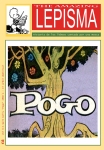
The vintage Z560M Nixie tubes, used in former East-Germany in the mid 20th century as numeric displays, were the inspiration for the design of Daniel Kurth's Nixie Concrete.
The Luxembourgish designer enclosed the shiny orange Nixie tubes in a reinforced rough concrete body which can optionally be wall mounted. The strength of this design lies in the application of 'retro technology' and its interesting combination of components and materials, where one is easily fooled as to what is old and what is new. All electronic components in this fully functioning prototype are assembled by hand.
Unlike other clocks that make use of Nixie tubes, this one does not read like a traditional display. Kurth experienced that clocks - regardless of their esthetic value - sometimes form a disturbing factor in one's house, since being constantly reminded of the time can be stressful. By rearranging the display, one can enjoy the playful interaction between the 6 different tubes without realising straight away what time it is. A short focus will however allow you to use it as a 'normal' clock. The time in the picture reads 10:23:54.
More on Daniel Kurth and his awesome Nixie Concrete Clock.
That's Right,
HMK



















































